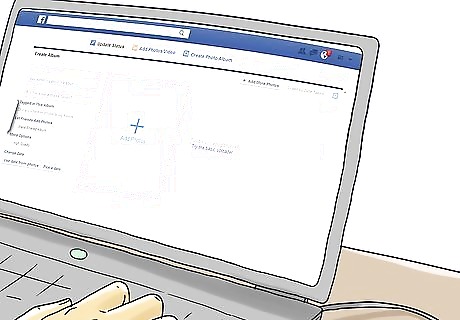
views
Writing a Presentation

Create an outline before you start writing. Follow the traditional outline of introduction, evidence, insights and conclusion. Imagine you are writing a story and need to map out the plot.

Use the rule of threes. Structure your report to respond to three aspects of the thing you are presenting or answer three questions, such as “what,” “why” and “how.” The human mind is set up to respond positively to three things in a list or in a presentation.

Tell a story or ask a question to get the audience thinking right away. This will help evoke a mental image and get them thinking critically about what you’re saying.

Find the most compelling data. Balance that and then tell them why the data is important in each of your three sections. Remember, most of the data can be shown with visual aids, so don’t over report.

Ask the audience questions. Instead of telling them the trends you see in the data, challenge them to find what the trends are telling the company. Build interaction into your presentation to avoid boring lectures.

Match the vocabulary and tone to your audience. Adjust your writing for each new audience you have. Research your audience so that you can better customize your presentation to their needs.

Ensure there is good flow to your presentation. Practice it in front of a colleague or friend so that you can ask them what they’ve taken away from the presentation.

Explain how your presentation or proposal adds value to the person’s life. The audience may only leave with this impression.

Keep it short and sweet. A shorter presentation is likely to be memorable. If the presentation is over 30 minutes, you should consider cutting it back or breaking it up into several chapters.
Creating Visual Aids

Pick your platform strategically. If you don’t have a projection screen or you’re outside in full sunlight, a PowerPoint won’t be the best way to present your data. PowerPoint presentations are still the gold standard of the business world; however, you might be able to employ a laptop, a projector or even cell phones to ensure you are reaching your audience.

Select a template that fits your audience. There’s very little reason to design your own template when so many slideshow programs give you compelling templates to choose from.

Choose a consistent design. Consistency allows the listener to notice the information, rather than the way it’s presented. Don’t change colors, fonts or structure unnecessarily.

Avoid excessive text in your slides. Use white space so that the audience’s attention is focused on particular data.

Use graphs, charts and other visual tools, in place of bulleted lists whenever possible. Your speaking will provide the insights, so give the data in the most straightforward way.

Try using infographics. This is a chart or graph that incorporates pictures with data and words to form a coherent, and very attractive, story. You may need to use an infographic service or hire a graphic designer. The more you visualize the text and information available in the presentation, the better impact it is going to create on the audience's mind.

Use photographs that are relevant. Make sure you don’t simply use stock imagery. Any way you can tie in company or emotional images will create a better response.

Focus on the slides themselves, rather than the music or transitions. These things can detract from a presentation, rather than add to it. A no frills approach is usually best.

Proof your visuals. Ask someone else to proof them. Including typos or incorrect data will reflect poorly on you.
Using Presentation Tools

Pick your slideshow program. PowerPoint is best if you are in a Windows-centric office and you need to share the presentation with others. Keynote is best in an Apple-centric environment. There are many more web-based services that you can use to develop your presentation. Some of these allow you to make and edit the presentation from a tablet or phone.

Make your slideshow into a movie. If you want to be able to pull your presentation up at any time, post it online for easy access. Use capabilities like Apple’s Airplay to push a YouTube clip to a large Apple computer.

Consider a web-based application if you plan to post your presentation to the web anyway. Services like Knovio allow you to add narration so that your presentation can be posted in its entirety.

Try a canvas-based presentation maker, like Prezi. The newest presentation services allow you to use a more natural, story-like flow, so the presentation feels like navigating a website, rather than moving through slides.

Post your presentation (with narration) to Slideshare or a similar website. You will reach more people and your presentation may even go viral. Make sure you have your company’s permission before doing so.

Share the Slideshare or movie link on social media. If you want a wider reach, then a good presentation can be shared using Facebook, Twitter and other outlets.



















Comments
0 comment